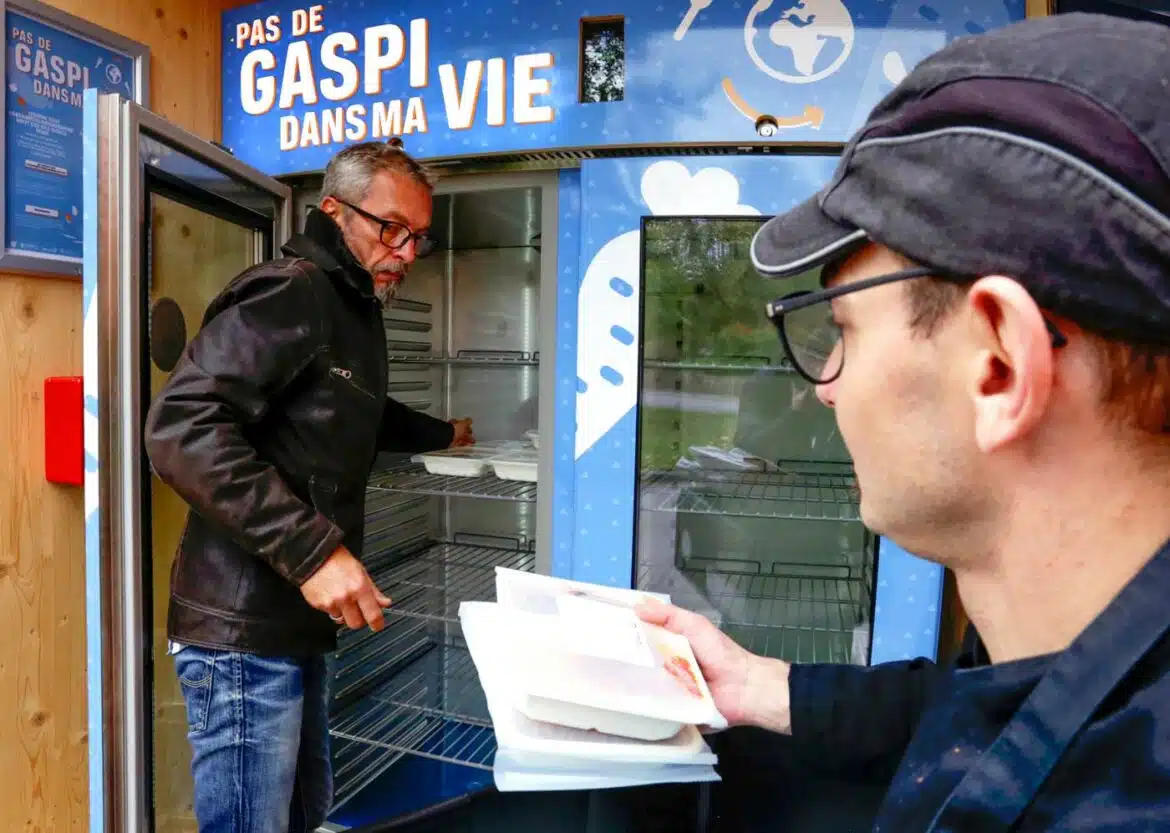This post is also available in: ![]() Deutsch
Deutsch ![]() Français
Français
Have you ever wondered if it’s possible to cook large quantities of food in a commercial kitchen and not end up with leftovers? The short answer is no, not really! Especially when the number of people to be fed ‒ and their appetites ‒ vary. The good news though is that there is no need for leftovers to end up in the bin.
A 2018-19 study on the “generation, treatment and prevention of food waste” by The Environment Agency of the Luxembourg Government and ECO-Conseil Sàrl, estimated that 40.5 per cent of the approximately 70,800 tonnes of food waste in Luxembourg could be avoided. In large kitchens (e.g. in canteens, hospitals, schools and care homes) alone, around 7,100 tonnes of food are thrown away every year − 80 per cent of which could have been prevented. But how? Spotlight on the west of the country where they are taking the initiative!
Two municipalities, one goal!
The towns of Tuntange and Hobscheid have a common goal: to prevent freshly-prepared, untouched, leftover food from large kitchens from ending up in the rubbish. Their solution: a refrigerator! The excess meals are sold to customers from a refrigerator that is accessible 24 hours a day. Anything that hasn’t been eaten that day is packaged into meals, given a legally required ingredient label, and sold for three euros per meal. So far, the response to the initiative has been very positive.
Pilot project success
A youth hostel in Hollenfels started a similar project back in 2019. A refrigerator was placed in the small town of Tuntange thanks to support from the municipality of Helperknapp and the Ministry of Agriculture, Viticulture and Rural Development. This self-service cooler is located on Rue de Hollenfels and is filled with leftover meals from the youth hostel. At first, there were around 15 meals daily, but this has now increased to closer to 25. Since the end of 2022, leftover dishes from the Helperknapp campus kitchen have also been sold there. Payment is made through the “honesty box”. Next to the fridge is a deposit box for tokens which can be obtained from the community office. Since its instalment in September 2019, around 4,900 portions (equivalent to two tonnes) of perfectly edible food have been saved from going to waste. Demand for the meals is high − so high, in fact, that a second refrigerator is on the cards for Brouch this summer.
Hobscheid gets on board
Since November 2022, the town of Hobscheid has also had a so-called “Anti-Gaspi” (“gaspi” is short for “gaspillage”, meaning “waste” in French) fridge at the roundabout in the “Hënneschtgaass.” The weekly menu can be found on the municipality’s homepage which also shows the number of meals sent there on weekdays. The purpose of this is to prove to customers that no extra cooking is done to fill the fridge: it is solely replenished with leftovers. It took Hobscheid about four months to implement this idea. The refrigerator’s “home”, made of Luxembourgish wood, was built by the community, while the appliance itself is rented (with any maintenance work included in the price). But Hobschied’s fight against food waste is not over yet… A relatively new phenomenon has occurred since the introduction of free childcare in the Maison Relais (day-care centre), where parents fail to notify the centre of a child’s absence. This naturally makes it more difficult to plan in advance and prepare food in a commercial kitchen with as few leftovers as possible.
Ingredients for success
In both communities, the development process − from conception to implementation − was smooth. So, what’s the secret? A well-thought-out concept, obtaining the necessary permits, getting support from the community and, of course, meeting food safety and hygiene requirements are all key to making it work.



Pictures: Ministry of Agriculture, Viticulture and Rural Development (Luc Pesch) & Municipality Hobscheid


